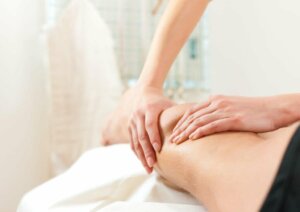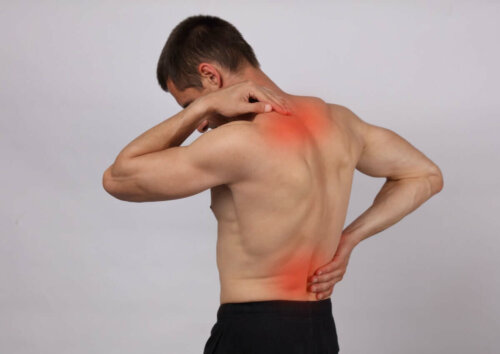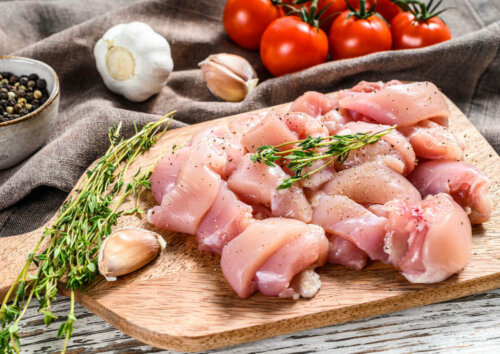Tips for Fighting Aches and Pains

Knowing how to fight aches and pains is quite important as they’re the most common injuries that exist. Specifically, aches and pains are muscular micro ruptures that happen when we excessively work our muscles, or if we don’t prepare them properly.
These aren’t serious injuries, but they can keep us away from practicing our favorite sport for a few days as our muscle tissue is damaged. And it’s important we do stay away. Doing otherwise could worsen the injury and lead to us breaking more muscular fibers.
Preventing aches and pains as much as we can
The first tip we’ll offer on how to fight aches and pains is that you don’t have to fight them. As we said above, aches and pains are micro ruptures to our muscular tissue caused by over-exertion.
For that reason, it’s important that you gradually increase the intensity of your workouts or sports. It’s no good surpassing your ability if your muscles are going to be weak for several days after.
It’s always a good idea to know your own body well and to adjust the intensity and duration of your training to complement this. Undoubtedly, if you’re just starting a sport, you should anticipate that you’ll over-exert yourself because it’s logical that your body will make you “suffer” for the first few days before you get used to it.
Tips for fighting aches and pains

Below, we share a series of actions that you can use to relieve aches and pains as and when they develop.
Gentle exercise
Although it doesn’t seem logical, if you’re suffering from aches and pains, one of the best things you can do is gently stimulate your muscles, as a study published in Sports Medicine confirms. If your legs are sore, it’s a good idea to go for a walk; if it’s your arms, you should try some aerobic exercise.
This is because by increasing the amount of blood flow to the area, we’re helping the muscles to cure themselves. Also, we can help our bodies to properly create new fibers; we want the new fibers to develop and work as quickly as possible.
In addition to those points, gentle exercise also helps to prevent aches and pains because it promotes muscular relaxation. As we’ve mentioned below, the damaged muscles are tense. By gently using and relaxing them, they’ll return to their natural state without that contraction which adds pain to the micro ruptures.
Massages
Gentle massages are a good way to relax the muscles that have been in a state of tension since the micro rupture. A couple of massages a day to the affected area will truly help, whether you do it to yourself or get someone else to help you.
There’s no need for an intense massage, but you do need to apply enough force to actually reach the muscle. It’s better if you go to a professional, but if that’s not an option, it’s important to start gently and increase the intensity gradually as you go.
Get enough rest
Despite the fact that we recommend gentle exercise, you should also get some rest. It’s important to give your body time to recuperate and allow the new fibers to completely form and be prepared.
As we mentioned above, if you don’t rest, or you try to do exercises that are too intense without having fully recuperated, you risk worsening the injury. Imagine you’re a piece of paper: breaking it in two requires a certain effort, but now that you’ve already broken it once, it’s a lot easier to do so again.
Watch what you eat
You can improve your recuperation time by watching what you eat. On one hand, foods rich in polyphenols can help to reduce inflammation and have an antioxidant effect. Among the foods that contain significant quantities of these substances, we can find lentils, beans, soy, onions, and tomatoes.
On the other hand, foods that contain taurine will help to calm the pain from these aches and pains. In this group, we include chicken, pork, eggs, and dairy products.

Similarly, we have foods such as turmeric that have demonstrated these effects, according to a study published by the European Journal of Applied Physiology.
It’s also worth confirming something you’ve probably already suspected; sugar water doesn’t help. There are no studies that demonstrate whether this classic remedy that we’ve all heard of is actually efficient. It may taste good, but it doesn’t have any curative properties.
Can you use anti-inflammatory medication to fight aches and pains?
Finally, we just want to clarify that it’s only advisable to take anti-inflammatory medication if you’re in a lot of pain and aren’t able to use the body part properly. By which, we mean in cases that the fibers have become so damaged they cause us a great deal of pain and affect our daily tasks.
If you’re just dealing with a simple annoyance, it’s best to not take any medication. If you feel it’s necessary, resorting to an alternative medicine could be a good option. But remember, prevention is always the best cure.
Knowing how to fight aches and pains is quite important as they’re the most common injuries that exist. Specifically, aches and pains are muscular micro ruptures that happen when we excessively work our muscles, or if we don’t prepare them properly.
These aren’t serious injuries, but they can keep us away from practicing our favorite sport for a few days as our muscle tissue is damaged. And it’s important we do stay away. Doing otherwise could worsen the injury and lead to us breaking more muscular fibers.
Preventing aches and pains as much as we can
The first tip we’ll offer on how to fight aches and pains is that you don’t have to fight them. As we said above, aches and pains are micro ruptures to our muscular tissue caused by over-exertion.
For that reason, it’s important that you gradually increase the intensity of your workouts or sports. It’s no good surpassing your ability if your muscles are going to be weak for several days after.
It’s always a good idea to know your own body well and to adjust the intensity and duration of your training to complement this. Undoubtedly, if you’re just starting a sport, you should anticipate that you’ll over-exert yourself because it’s logical that your body will make you “suffer” for the first few days before you get used to it.
Tips for fighting aches and pains

Below, we share a series of actions that you can use to relieve aches and pains as and when they develop.
Gentle exercise
Although it doesn’t seem logical, if you’re suffering from aches and pains, one of the best things you can do is gently stimulate your muscles, as a study published in Sports Medicine confirms. If your legs are sore, it’s a good idea to go for a walk; if it’s your arms, you should try some aerobic exercise.
This is because by increasing the amount of blood flow to the area, we’re helping the muscles to cure themselves. Also, we can help our bodies to properly create new fibers; we want the new fibers to develop and work as quickly as possible.
In addition to those points, gentle exercise also helps to prevent aches and pains because it promotes muscular relaxation. As we’ve mentioned below, the damaged muscles are tense. By gently using and relaxing them, they’ll return to their natural state without that contraction which adds pain to the micro ruptures.
Massages
Gentle massages are a good way to relax the muscles that have been in a state of tension since the micro rupture. A couple of massages a day to the affected area will truly help, whether you do it to yourself or get someone else to help you.
There’s no need for an intense massage, but you do need to apply enough force to actually reach the muscle. It’s better if you go to a professional, but if that’s not an option, it’s important to start gently and increase the intensity gradually as you go.
Get enough rest
Despite the fact that we recommend gentle exercise, you should also get some rest. It’s important to give your body time to recuperate and allow the new fibers to completely form and be prepared.
As we mentioned above, if you don’t rest, or you try to do exercises that are too intense without having fully recuperated, you risk worsening the injury. Imagine you’re a piece of paper: breaking it in two requires a certain effort, but now that you’ve already broken it once, it’s a lot easier to do so again.
Watch what you eat
You can improve your recuperation time by watching what you eat. On one hand, foods rich in polyphenols can help to reduce inflammation and have an antioxidant effect. Among the foods that contain significant quantities of these substances, we can find lentils, beans, soy, onions, and tomatoes.
On the other hand, foods that contain taurine will help to calm the pain from these aches and pains. In this group, we include chicken, pork, eggs, and dairy products.

Similarly, we have foods such as turmeric that have demonstrated these effects, according to a study published by the European Journal of Applied Physiology.
It’s also worth confirming something you’ve probably already suspected; sugar water doesn’t help. There are no studies that demonstrate whether this classic remedy that we’ve all heard of is actually efficient. It may taste good, but it doesn’t have any curative properties.
Can you use anti-inflammatory medication to fight aches and pains?
Finally, we just want to clarify that it’s only advisable to take anti-inflammatory medication if you’re in a lot of pain and aren’t able to use the body part properly. By which, we mean in cases that the fibers have become so damaged they cause us a great deal of pain and affect our daily tasks.
If you’re just dealing with a simple annoyance, it’s best to not take any medication. If you feel it’s necessary, resorting to an alternative medicine could be a good option. But remember, prevention is always the best cure.
All cited sources were thoroughly reviewed by our team to ensure their quality, reliability, currency, and validity. The bibliography of this article was considered reliable and of academic or scientific accuracy.
- L. Nicol, D. Rowlands, R. Fazakerly et al. Curcumin supplementation likely attenuates delayed onset muscle soreness (DOMS). European Journal of Applied Physiology, volume 115, pages1769–1777 (2015).
- K. Cheung, P. Hume y L. Maxwell. Delayed Onset Muscle Soreness. Sports Medicine, volume 33, pages145–164 (2003).
- P. Lewis, D. Ruby y C. Bush. Muscle Soreness and Delayed-Onset Muscle Soreness. Clinics in Sports Medicine. volume 31, issue 2, P255-262 (2012)
This text is provided for informational purposes only and does not replace consultation with a professional. If in doubt, consult your specialist.








